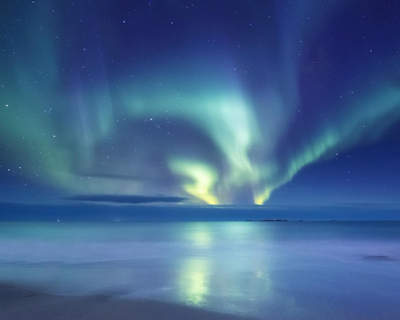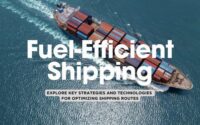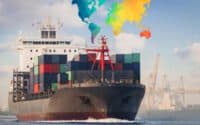The Impact of the Northern Sea Route on Global Shipping: Promises, Perils, and Predictions

The Northern Sea Route (NSR), often seen as the maritime jewel of the Arctic, has long captivated the imaginations of explorers, merchants, and geopoliticians. Spanning from the Barents Sea, close to Russia’s border with Norway, to the Bering Strait near Alaska, the NSR presents an enticing shortcut. It promises a direct passage between the bustling markets of Europe and Asia, potentially reducing the typical voyage by thousands of miles compared to the conventional Suez Canal route. Such a reduction doesn’t merely shave off days from a shipment’s transit time—it reshapes global trade dynamics.
* Please send feedback/suggestions to editor @ shipuniverse.com
Historical Context
Historically, the thick, treacherous ice sheets of the Arctic rendered the NSR largely impassable for standard commercial vessels. Yet, the world today isn’t what it was a few decades ago. As climate change accelerates, it’s manifested in melting polar ice caps and retreating Arctic ice sheets, unveiling the once-elusive NSR for longer periods each year.
The first complete passage through the NSR without the aid of icebreakers was made as recently as 2009 by two German vessels. This monumental journey didn’t just prove the route’s feasibility; it was a stark testament to the rapid changes our planet is undergoing. With each passing year, the accessibility window for the NSR expands, and what was once a mariner’s dream is now a logistical reality.
Benefits Touted
The advantages of the NSR are manifold:
- Economic Savings: The NSR could slash the transit time between Rotterdam and Yokohama by up to 40%, translating to significant savings in fuel costs and faster delivery times. For businesses, time is money, and the NSR promises plenty of both.
- Reduced Fuel Consumption: A shorter route means vessels burn less fuel, leading to reduced greenhouse gas emissions—a boon in an age of environmental consciousness and tightening emission regulations.
- Strategic Advantages: Beyond the immediate commercial benefits, the NSR also presents nations with strategic depth. For countries like Russia, it’s an opportunity to bolster its presence in the Arctic, control a significant chunk of global trade, and collect transit fees.
Challenges & Controversies Facing the NSR
Environmental Concerns
As the ice retreats and the NSR opens, the Arctic stands at the brink of unprecedented change. But with this change comes peril, especially for the fragile ecosystems that call the Arctic home.
- Fragile Ecosystems: The Arctic harbors unique wildlife and habitats. Increased shipping activity might lead to disturbances in migration patterns of species like whales, increased noise pollution, and the potential for devastating ship strikes.
- Oil Spills: With shipping comes the risk of oil spills. In the cold, remote conditions of the Arctic, cleaning up an oil spill would be exponentially more challenging than in more temperate regions. The repercussions of such an event could be catastrophic for the marine ecosystem and the indigenous communities reliant on these waters.
- Irony of Climate Change: It’s an ironic twist—climate change has enabled the NSR, yet increased shipping could exacerbate global warming due to emissions. Moreover, the mere act of more vessels traversing the Arctic might disturb and break up more ice, further accelerating the melting process.
Geopolitical Tensions
The NSR isn’t merely a passage; it’s a geopolitical chessboard, replete with territorial claims and national interests.
- Territorial Claims: The Arctic is dotted with overlapping territorial claims. Russia, Canada, Denmark (via Greenland), and other Arctic nations have staked their claims, often extending to the resource-rich seabed. As the NSR becomes commercially viable, these claims are likely to become flashpoints of contention.
- Strategic Posturing: The NSR offers not just economic advantages but also strategic depth. Control over portions of this route allows nations like Russia to exert influence, monitor military movements, and potentially restrict access during conflicts.
- International Laws and Treaties: The UNCLOS (United Nations Convention on the Law of the Sea) provides guidelines, but its interpretations vary. The status of the NSR—whether an international passage or under national jurisdiction—remains a contentious issue.
Navigational Challenges
While melting ice makes the NSR more accessible, it’s far from a calm sea journey.
- Ice Unpredictability: Despite retreating ice, conditions remain unpredictable. Icebergs and floating ice sheets can pose serious risks, even during the “safer” months.
- Specialized Vessels: Not all ships can navigate the NSR. Ice-class vessels, with reinforced hulls and specialized equipment, are a necessity. This limits the type and number of vessels that can use the route.
- Remote and Harsh: The Arctic is remote, with few ports of refuge. In case of emergencies, help might be days away. Additionally, the cold can wreak havoc on equipment, while the extended hours of darkness in certain months pose further navigational challenges.
Predictions for the Future of the NSR and Global Shipping
Market Impacts
The NSR has the potential to redraw the world’s maritime trading maps, influencing shipping rates and the prominence of global ports.
- Shipping Rates: The reduced distance and transit times could lead to significant cost savings, potentially leading to reduced shipping rates. However, increased demand for ice-class vessels and potential transit fees could offset some of these savings.
- Major Global Ports: Traditionally significant ports along the Suez Canal route might see reduced traffic, while ports in the Arctic region or those positioned as NSR entry/exit points could gain prominence. This shift could have profound economic implications for port cities and their hinterlands.
- Freight Indices: As the NSR becomes a more standard shipping route, freight indices, which track shipping costs and capacities, could see fluctuations. A more direct route with reduced transit times might also influence the commodities market, affecting prices and trading strategies.
Route Viability
As enticing as the NSR appears, questions remain about its long-term viability.
- Seasonal Restrictions: Even with the most optimistic projections about ice melt, the NSR is likely to remain a seasonal route. The duration of this window is crucial in determining the route’s economic viability.
- Regulatory Constraints: Environmental concerns could lead to strict regulations on shipping in the Arctic. These rules, while necessary to protect the environment, might limit the commercial attractiveness of the NSR.
- Infrastructure Development: The NSR lacks the necessary infrastructure—ports, repair facilities, and search and rescue capabilities—that more established routes offer. The development of these facilities will be crucial for the route’s success.
The Northern Sea Route stands at the intersection of opportunity and challenge. Its emergence is a testament to our rapidly changing planet and the adaptive nature of global trade. While the promises are vast—faster transit times, economic savings, strategic advantages—the perils are equally profound. The fragile Arctic environment, the geopolitical chessboard, and the navigational hazards all add layers of complexity to the NSR narrative.
The future of the NSR is not just about connecting two points on a map—it’s about reconciling our ambitions with our responsibilities. As global commerce eyes this new horizon, the hope is that it does so with a commitment to safeguarding the environment, fostering international collaboration, and ensuring that the benefits of the NSR are realized without compromising the very world we inhabit.
The NSR’s story is one of a world in flux, a testament to humanity’s resilience, innovation, and the challenges that come with uncharted territories. Whether it becomes the next global shipping highway or remains a seasonal passage, its legacy is already being written.

Do you have a Maritime Product or Service that may be of interest to Shipowners? Tell us about it here!
Do you have feedback or insights? Please reach out to editor @ shipuniverse.com



